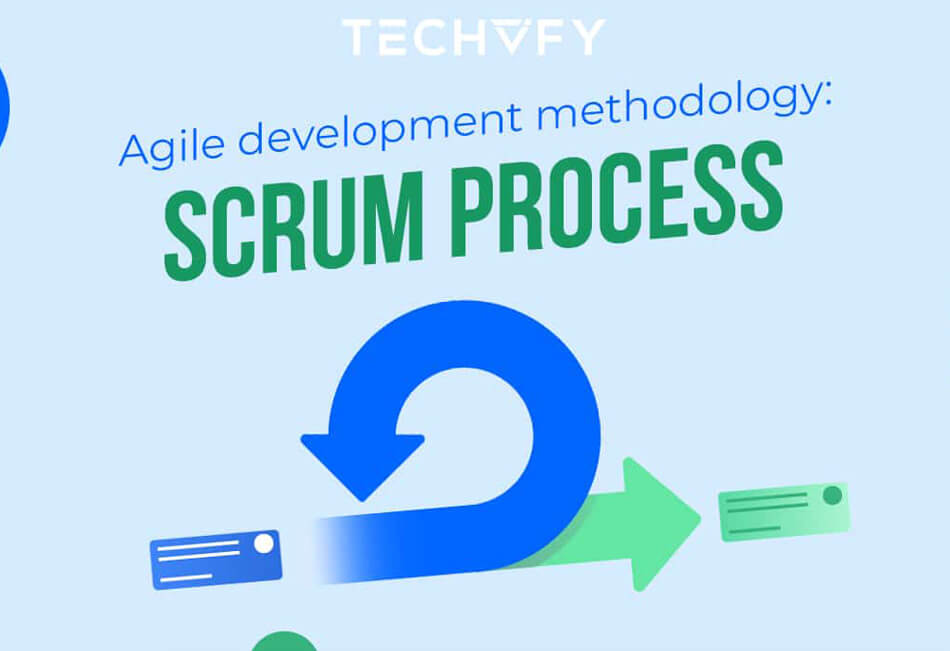Scrum vs. Waterfall: What’s The Difference?
There are various methodologies in software development: Agile, DevOps deployment, Waterfall, Scrum, etc. But how can business owners identify which method is most suitable for their software development project?
In this article, TECHVIFY Software will analyze and compare the advantages and disadvantages of Scrum vs. Waterfall.
I. Difference between Scrum vs. Waterfall methodology – an overview:
In our previous articles, we have introduced some basic information about how the Scrum process and Waterfall process work. So here are the main differences between these two software development methodologies:
| Scrum | Waterfall |
| Value-driven | Schedule driven. |
| Development is iterative and incremental | Development is phase-based and sequential. |
| It includes customers and stakeholders at each phase | The customers are only involved in the very last steps when the result is near. |
| A cross-functional team with knowledge of the product invested in the whole team through shared experiences | Handovers between analyses-design-build-test phases with knowledge stored in documents |
| Offer time and money efficiency by reviewing regular sprints in the development process | Require extra time because reviewing is only done at the last step. |
| Work is divided into teams as an individual responsibility. | Work is divided into phases. The team works closely. |
| The customer is kept in the loop for feedback throughout the process of development | The required documentation is done at the initial stage. |
| Suitable for difficult and complex projects | Suitable for smaller projects |
| It has no defined stages | The stages are clearly defined from the beginning. |
| Adapt very quickly to changes throughout the process | Changes are only welcomed at the requirement phase. |
| The development process is divided into smaller stages to work with | Phases and processes are completed, respectively. |
| It divides its work into sprints and is then assigned according to team members | It divides its work into stages, and the process continues one after the other. |
| Not bound by a tight deadline | Have to strictly follow a tight deadline. |
II. Pros and Cons of the Waterfall process
To understand more thoroughly, we will find out the advantages and disadvantages of each method.
| Advantages | Disadvantages |
| Before the next phase of development, each phase must be completed. | The linear project plan is rigid and lacks flexibility for adapting to unexpected events. |
| Suited for smaller projects where requirements are well defined. | It is not desirable for a complex project where requirement changes frequently. |
| Perfect quality assurance tests have to be done before completing each stage. | The testing period comes quite late in the process, and errors can only be fixed during this phase. |
| Elaborate documentation is done at every phase of the software’s development cycle. | Documentation occupies a lot of time for developers and testers. |
| The project is completely dependent on a project team with minimum client intervention. | Clients cannot give feedback during the process. Small changes or errors that arise in the completed software may cause a lot of problems and money to go back and design the code again. |
| Project requirements are agreed upon in the first phase, so planning and scheduling are simple and clear. | It might be difficult for customers to specify all of their needs at the beginning of the project. |
| With a fully laid-out project schedule, you can give accurate estimates for your project cost, resources, and deadlines. |
III. Pros and Cons of the Scrum process
| Advantages | Disadvantages |
| Quickly adapt to changes | The final product can be different because of too many changes during the process. |
| The working efforts of the team member can be measured individually | Team members have to be skillful enough to bring out the best result. |
| It saves time because the chances of errors are less | The conflict between team members can threaten the deadline. |
| Scrum provides flexibility for changes in the product during any stage | Many changes during software development can cause a delay in the process because of an increase in the amount of work. |
| The customer will be able to see the working software before the final delivery | Documentation might be neglected because the developing team only cares about general documents that can support the software development process. |
| Simple planning makes the process more flexible and easier to manage | Planning can be less concrete. |
| Constant communication and interaction with the customer are priorities over the process and tools. |
Now that you’ve learned the differences between Scrum vs. Waterfall, as well as the benefits of each method, it’s time to decide which approach would be best suited for your project. Depending on your project’s needs, your final choice should give the best results for the time and money spent.
TECHVIFY is an offshore software development company that has experience in consulting the most suitable developing model for businesses.
So, if you are a business owner who is confused because of various software development methodologies, leave your information, and we will get in touch shortly to discuss technology solutions for your business.
Discover more in our new articles about offshore software development: What is an offshore development center: How does Scrum best work in the process?





